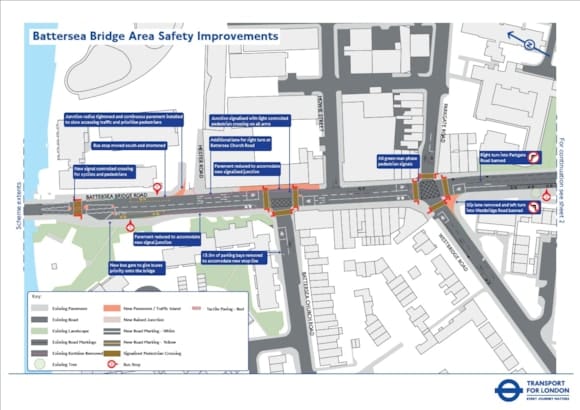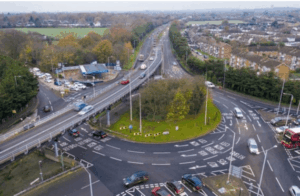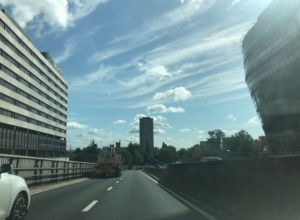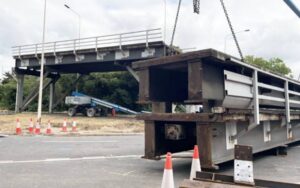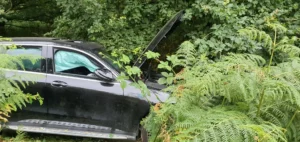Transport for London has announced it’s moving forward with its next phase of plans to reduce road danger for people walking and cycling on and near Battersea Bridge.
Construction work will begin on 1 November and include an 11-month programme of improvements to pavements and traffic signals, as well as changes to the road layout at several junctions along Battersea Bridge Road on the south side of the river, and at the Cheyne Walk junction on the north side.
TfL will begin work on the south side of the river at the junction of Battersea Bridge Road and Cambridge Road, moving north towards the bridge one junction at a time to minimise potential disruption. These works are part of TfL’s Safer Junction programme to improve safety in areas across London with higher-than-average collision rates and to protect bus journey times along the Battersea Bridge corridor. Making roads and junctions safer for everyone is a key part of the Mayor’s Vision Zero goal of eliminating death and serious injury on the transport network by 2041.
Following public consultation in late 2022 and early 2023, TfL is proceeding with the following changes to the Battersea Bridge area:
- Installation of three new controlled crossing points, improving cycle facilities, creating two new sections of bus lanes, and building out two corners at the Cheyne Walk junction to increase pavement space to encourage lower speeds.
- Installation of new signalised pedestrian crossings at the junction of Battersea Bridge Road and Prince of Wales Drive, and at the southern end of Battersea Bridge.
- Introduction of new signalised crossing points to improve safety, modernising existing traffic signals, and upgrading pavements at Battersea Bridge Road’s junctions with Battersea Church Road and Westbridge/Parkgate Road.
- Installation of a signalised bus gate across the southern approach onto Battersea Bridge.
- Permanently relocating ‘Battersea Bridge’ (BL) bus stop and shelter a short distance (around 15 metres) from its current location.
- Installation of a new cycle lane, upgrading the pedestrian crossing, and installing a new section of bus lane at the junction of Battersea Road and Cambridge Road.
- Amending traffic lane widths over Battersea Bridge to make it safer for cyclists using the bridge.
- Improved road markings throughout the Battersea Bridge area to improve driver behaviour and pedestrian and cyclist safety.
- Improving existing drainage systems and installing cycle-friendly gullies.
Construction work will begin on 1 November and is planned to finish in autumn next year. TfL will work to keep disruption to the road network to a minimum. While work is being carried out, there may be some delays on roads and on several bus routes. TfL is advising people to plan ahead and use alternative routes where possible. The latest status updates can be found on the TfL website for both buses and roads.
TfL brought forward plans to improve safety on the bridge following a passionate campaign, led by local journalist Rob McGibbon and other groups, after the tragic death of Jack Ryan on Battersea Bridge on 13 January 2021. The first phase of work on the north side of the bridge was completed in November 2021 and included a new pedestrian crossing, wider pavements and a new lower speed limit of 20mph. These works complete the safety upgrade to the Cheyne Walk junction and delivery of additional improvements on the south side of Battersea Bridge.
Penny Rees, TfL’s Head of Healthy Streets Investment, said: “We are committed to Vision Zero, the Mayor’s goal to eliminate death and serious injury from the transport network, and these changes will play a vital role in reducing danger at this key junction.
“I would like to thank local safety campaigners, including journalist Rob McGibbon, and the local community for working with us to develop these proposals. We have seen large reductions in collisions at other junctions where we have introduced similar improvements, and hope these works will make a real difference to the safety of people walking and cycling in the local area.”
Will Norman, The Walking and Cycling Commissioner, said: “Making London’s roads safer is the Mayor’s and my highest priority and it is vital in enabling more people to choose walking and cycling. I’m delighted that the work to improve safety around Battersea bridge will be starting in November. These important upgrades will make the roads and junctions safer for all road users, building a better, safer and greener London for everyone.”
Wandsworth Councillor Jenny Yates, Cabinet Member for Transport said:“Wandsworth Council fully supports the work TfL is doing to make the Battersea Bridge area safer for pedestrians and cyclists. Improving road safety is a key priority for us as we continue to encourage more residents to walk and cycle as part of our commitment to active travel.”
TfL says it continues to work in partnership with the boroughs, police and other stakeholders to directly tackle road danger and continues to work on a number of major programmes to make London’s roads and the vehicles using them safer. TfL’s world-first Direct Vision Standard, which reduces lethal blind spots on lorries, is already helping to save lives and prevent life-changing injuries. From next week, TfL will be enhancing DVS requirements with all HGVs over 12 tonnes required to have a three-star rating or fit Progressive Safe System measures to operate in Greater London. TfL has also continued to work on its Safer Junctions programme to make life-saving changes at some of the capital’s most dangerous and intimidating junctions. TfL has so far completed work at 45 junctions across London as part of the programme, with works at Lambeth Bridge also underway.
(Picture – TfL)



